Some of the more commonly used case conceptualisations in CBT include the following:
- Five Part model
- 5Ps
- Box/Arrow In/Arrow Out
- Cognitive Conceptualisation Diagram (CCD)
While you might like to use a specific case conceptualisation with your clients, the main thing is acknowledging that there is not just “one conceptualisation” for each client. Rather, a case conceptualisation can evolve naturalistically over the course of therapy, incorporating just enough information to facilitate the tasks of that stage of therapy. That is, levels of conceptualisation may exist that are more beneficial to clients
Kuyken and colleagues' (2009) described three levels of case conceptualisation depending on where the client is at in therapy:
In modern CBT, the aim would be for the therapist to gauge the client’s stage of progression and work with a formulation that matches that stage (e.g. a client may come in with all the background knowledge from previous therapy and is able to go straight into the level 3 formulation (such as the CCD) or in depth functional analysis (such as a SORC that has been developed over time to include lots of factors); others may need to start from level 1 using a formulation such as the Five-Part Model or simpler functional analysis; there is also a choice to be made from the therapist as to which formulation to use when there are multiple options for a specific level. For new therapists, it may be easiest to start with a level 1 formulation (e.g. Five-Part Model), then move to either the 5Ps or Box/Arrow in/ Arrow Out, and then the CCD (or other comprehensive formulations).
Let’s look at each of these case formulations in more detail.

Descriptive case conceptualisations that therapists and clients form early in therapy to demonstrate links among presenting client issues and thoughts, behaviours, moods, physical reactions, and environmental factors.

Cross-sectional conceptualisations: over time, information is gathered to construct models that identify cross-situational triggers and maintenance factors for specific presenting issues.

Longitudinal case conceptualisations link current difficulties with early developmental factors, core beliefs, and predisposing and protective factors across a lifetime.

COMMONLY USED
CASE CONCEPTUALISATIONS
You just heard David Tolin discussing one of his favourite case conceptualisations, the SORC; however, there are numerous other types of case conceptualisations you can use.
COMMONLY USED CASE CONCEPTUALIZATIONS
You just heard David Tolin discussing one of his favourite case conceptualisations, the SORC; however, there are numerous other types of case conceptualisations you can use.
COMMONLY USED
CASE CONCEPTUALIZATIONS
You just heard David Tolin discussing one of his favorite case conceptualizations, the SORC; however, there are numerous other types of case conceptualizations you can use.


Some of the more commonly used case conceptualizations in CBT include the following:
- Five Part Model
- 5P's
- Box/Arrow In/Arrow Out
- Cognitive Conceptualization Diagram (CCD)
While you might like to use a specific case conceptualization with your clients, the main thing is acknowledging that there is not just “one conceptualization” for each client. Rather, a case conceptualization can evolve naturalistically throughout therapy, incorporating just enough information to facilitate the tasks of that stage of therapy. That is, levels of conceptualization may exist that are more beneficial to clients
Kuyken and colleagues (2009) described three levels of case conceptualization depending on where the client is at in therapy:

Descriptive case conceptualizations that therapists and clients form early in therapy to demonstrate links among presenting client issues and thoughts, behaviors, moods,
physical reactions, and environmental factors.

Cross-sectional conceptualizations: over time, information is gathered to construct models that identify cross-situational triggers and maintenance factors for specific presenting issues.

Longitudinal case conceptualizations link current difficulties with early developmental factors, core beliefs, and predisposing and protective factors across a lifetime.
In modern CBT, the aim would be for the therapist to gauge the client’s stage of progression and work with a formulation that matches that stage (e.g. a client may come in with all the background knowledge from previous therapy and is able to go straight into the level 3 formulation (such as the CCD) or in-depth functional analysis (such as a SORC that has been developed over time to include lots of factors); others may need to start from level 1 using a formulation such as the Five-Part Model or simpler functional analysis; there is also a choice to be made from the therapist as to which formulation to use when there are multiple options for a specific level. For new therapists, it may be easiest to start with a level 1 formulation (e.g. Five-Part Model), then move to either the 5Ps or Box/Arrow in/ Arrow Out, and then the CCD (or other comprehensive formulations).
Let’s look at each of these case formulations in more detail.


Five Part Model
The Five-Part Model looks at five parts: life/environment, moods, thoughts, behaviors, and physical reactions. During the intake session, most CBT therapists ask questions to identify moods, thoughts, behaviors, and physical reactions associated with presenting issues. In addition, therapists typically inquire about historical and current life and cultural factors that have relevance to whatever will be the immediate focus of therapy.
When planning to use the five-part model for case conceptualization, therapists are advised to make note of which of these five parts of experience the client mentions first and which one(s) the client wants to change. At the end of the intake or in the following session, the five-part model can be co-created as a written summary of information relevant to the targets of change. This model can be considered a level 1 case conceptualization if using the levels proposed by Kuyken and colleagues (2009).

defining the current problems the person faces.

identifying historical events (i.e. past experiences) and/or generic vulnerabilities that may be involved in the development of the presenting problems.

identifying events, situations, and incidents that occurred prior to, and likely contributed to, the presenting problems.

identifying thoughts, emotions, reactions, and behaviors that maintain or worsen the presenting problems.

identifying resources, strengths, activities, or people that may help the person cope with or deal with the presenting problems.
The 5 P's Case Conceptualization
This case formulation aims to gather information for each of the
following areas (each one starting with a “P”):
The 5 P's can be used as a level 2 case conceptualization; however, it can still be utilized early in therapy.





Box/arrow in/arrow out is a level 2 conceptualization that zooms in and looks more closely at one issue the client wants to understand better and change. It helps clients identify triggers and maintenance factors for specific issues of concern. This model could be used with a client a few sessions later in therapy when the focus is more closely on one of his/her issues (e.g., sleep difficulties, anxiety, depression, conflict with their partner, etc.) to identify its triggers and maintenance processes.
In this way, it is similar to the SORC. Box/arrow in/arrow out can also be helpful as a first strategy for collaborative case conceptualization when a client comes to therapy for problems maintained by maladaptive behavior patterns or avoidance. Thus, it can be appropriate to use box/arrow in/arrow out in the session following the intake interview when a client comes to therapy for help with anxiety disorders, addictions, or interpersonal issues.
Box/Arrow In/Arrow Out





Cognitive Conceptualization
For this formulation, the therapist is expected to understand how the early experiences have led to specific unhelpful core beliefs and how those negative core beliefs then lead to specific assumptions and self-imposed rules that the individual then creates unhelpful compensatory mechanisms around in an attempt to adjust/fit into the world.
As a result of the above, the individual will find their presenting symptoms triggered in certain situations – i.e. these situations trigger negative automatic thoughts leading to emotions/symptoms and reactions/behaviors.

This formulation/conceptualization requires more in-depth knowledge about the client and will take time to understand and fill out. It is considered a level 3 case conceptualization if using the levels proposed by Kuyken and colleagues (2009).
(see diagram for details).
Whichever case conceptualization you choose to use with your clients, the important thing is that you do it in a collaborative manner, in a way that makes sense to your client, and that you develop it according to what they offer you rather than any assumptions you may be making.
If you’re ready to move onto the next section of the course, just click the close button in the top right hand corner
The CCD uses the cognitive model based on Beck’s work, proposing the following interaction: relevant history influences core beliefs which influence intermediate beliefs, assumptions, and rules; these, in turn, influence the development of compensatory strategies/coping methods that influence how a situation might trigger automatic thoughts and reactions (emotional, physical or behavioral).

COMMONLY USED
CASE CONCEPTUALISATIONS
You just heard David Tolin discussing one of his favourite case conceptualisations, the SORC; however, there are numerous other types of case conceptualisations you can use.


Some of the more commonly used case conceptualisations in CBT include the following:
- Five Part model
- 5Ps
- Box/Arrow In/Arrow Out
- Cognitive Conceptualisation Diagram (CCD)
While you might like to use a specific case conceptualisation with your clients, the main thing is acknowledging that there is not just “one conceptualisation” for each client. Rather, a case conceptualisation can evolve naturalistically over the course of therapy, incorporating just enough information to facilitate the tasks of that stage of therapy. That is, levels of conceptualisation may exist that are more beneficial to clients
Kuyken and colleagues' (2009) described three levels of case conceptualisation depending on where the client is at in therapy:
In modern CBT, the aim would be for the therapist to gauge the client’s stage of progression and work with a formulation that matches that stage (e.g. a client may come in with all the background knowledge from previous therapy and is able to go straight into the level 3 formulation (such as the CCD) or in depth functional analysis (such as a SORC that has been developed over time to include lots of factors); others may need to start from level 1 using a formulation such as the Five-Part Model or simpler functional analysis; there is also a choice to be made from the therapist as to which formulation to use when there are multiple options for a specific level. For new therapists, it may be easiest to start with a level 1 formulation (e.g. Five-Part Model), then move to either the 5Ps or Box/Arrow in/ Arrow Out, and then the CCD (or other comprehensive formulations).
Let’s look at each of these case formulations in more detail.

Descriptive case conceptualisations that therapists and clients form early in therapy to demonstrate links among presenting client issues and thoughts, behaviours, moods, physical reactions, and environmental factors.

Cross-sectional conceptualisations: over time, information is gathered to construct models that identify cross-situational triggers and maintenance factors for specific presenting issues.

Longitudinal case conceptualisations link current difficulties with early developmental factors, core beliefs, and predisposing and protective factors across a lifetime.



Five Part Model
The Five-Part Model looks at five parts: life/environment, moods, thoughts, behaviours, and physical reactions. During the intake session, most CBT therapists ask questions to identify moods, thoughts, behaviours, and physical reactions associated with presenting issues. In addition, therapists typically inquire about historical and current life and cultural factors that have relevance to whatever will be the immediate focus of therapy.
When planning to use the five-part model for case conceptualization, therapists are advised to make note of which of these five parts of experience the client mentions first and which one(s) the client wants to change. At the end of the intake or in the following session, the five-part model can be co-created as a written summary of information relevant to the targets of change. This model can be considered a level 1 case conceptualisation if using the levels proposed by Kuyken and colleagues (2009).




defining the current problems the person faces.

identifying historical events (i.e. past experiences) and/or generic vulnerabilities that may be involved in the development of the presenting problems.

identifying events, situations, incidents that occurred prior to, and likely contributed to, the presenting problems.

identifying thoughts, emotions, reactions, behaviours that maintain or worsen the presenting problems.

identifying resources, strengths, activities or people that may help the person cope with or deal with the presenting problems.
The 5 P's
Case Conceptualisation
This case formulation aims to gather information for each of the following areas (each one starting with a “P”):
The 5Ps can be used as a level 2 case conceptualisation; however, it can still be utilised early in therapy.


Box/arrow in/arrow out zooms in and looks more closely at one issue the client wants to understand better and change. It helps clients identify triggers and maintenance factors for specific issues of concern. This model could be used with a client a few sessions later in therapy when the focus is more closely on one of his/her issues (e.g., sleep difficulties, anxiety, depression, conflict with their partner, etc.) in order to identify its triggers and maintenance processes.
In this way, it is similar to the SORC. Box/arrow in/arrow out can also be helpful as a first strategy for collaborative case conceptualization when a client comes to therapy for problems maintained by maladaptive behaviour patterns or avoidance. Thus, it can be appropriate to use box/arrow in/arrow out in the session following the intake interview when a client comes to therapy for help with anxiety disorders, addictions, or interpersonal issues.
Box/Arrow In/Arrow Out






Cognitive Conceptualisation
The CCD uses the cognitive model based on Beck’s work, proposing the following interaction: relevant history influences core beliefs which influence intermediate beliefs, assumptions, and rules; these, in turn, influence development of compensatory strategies/coping methods that influence how a situation might trigger automatic thoughts and reactions (emotional, physical or behavioural).
For this formulation the therapist is expected to understand how the early experiences have led to specific unhelpful core beliefs and how those negative core beliefs then lead to specific assumptions and self-imposed rules that the individual then creates unhelpful compensatory mechanisms around in an attempt to adjust/fit into the world.

As a result of the above, the individual will find their presenting symptoms triggered in certain situations – i.e. these situations trigger negative automatic thoughts leading to emotions/symptoms and reactions/behaviours.
This formulation/conceptualisation requires more in depth knowledge about the client and will take time to understand and fill out. It is considered a level 3 case conceptualisation if using the levels proposed by Kuyken and colleagues (2009).
(see diagram for details).
Whichever case conceptualisation you choose to use with your clients, the important thing is that you do it in a collaborative manner, in a way that makes sense to your client, and that you develop it according to what they offer you rather than any assumptions you may be making.



Some of the more commonly used case conceptualisations in CBT include the following:
- Five Part model
- 5Ps
- Box/Arrow In/Arrow Out
- Cognitive Conceptualisation Diagram (CCD)
While you might like to use a specific case conceptualisation with your clients, the main thing is acknowledging that there is not just “one conceptualisation” for each client. Rather, a case conceptualisation can evolve naturalistically over the course of therapy, incorporating just enough information to facilitate the tasks of that stage of therapy. That is, levels of conceptualisation may exist that are more beneficial to clients
Kuyken and colleagues' (2009) described three levels of case conceptualisation depending on where the client is at in therapy:
In modern CBT, the aim would be for the therapist to gauge the client’s stage of progression and work with a formulation that matches that stage (e.g. a client may come in with all the background knowledge from previous therapy and is able to go straight into the level 3 formulation (such as the CCD) or in depth functional analysis (such as a SORC that has been developed over time to include lots of factors); others may need to start from level 1 using a formulation such as the Five-Part Model or simpler functional analysis; there is also a choice to be made from the therapist as to which formulation to use when there are multiple options for a specific level. For new therapists, it may be easiest to start with a level 1 formulation (e.g. Five-Part Model), then move to either the 5Ps or Box/Arrow in/ Arrow Out, and then the CCD (or other comprehensive formulations).
Let’s look at each of these case formulations in more detail.

Descriptive case conceptualisations that therapists and clients form early in therapy to demonstrate links among presenting client issues and thoughts, behaviours, moods, physical reactions, and environmental factors.

Cross-sectional conceptualisations: over time, information is gathered to construct models that identify cross-situational triggers and maintenance factors for specific presenting issues.

Longitudinal case conceptualisations link current difficulties with early developmental factors, core beliefs, and predisposing and protective factors across a lifetime.

COMMONLY USED
CASE CONCEPTUALISATIONS
You just heard David Tolin discussing one of his favourite case conceptualisations, the SORC; however, there are numerous other types of case conceptualisations you can use.


Five Part Model
The Five-Part Model looks at five parts: life/environment, moods, thoughts, behaviours, and physical reactions. During the intake session, most CBT therapists ask questions to identify moods, thoughts, behaviours, and physical reactions associated with presenting issues. In addition, therapists typically inquire about historical and current life and cultural factors that have relevance to whatever will be the immediate focus of therapy.
When planning to use the five-part model for case conceptualization, therapists are advised to make note of which of these five parts of experience the client mentions first and which one(s) the client wants to change. At the end of the intake or in the following session, the five-part model can be co-created as a written summary of information relevant to the targets of change. This model can be considered a level 1 case conceptualisation if using the levels proposed by Kuyken and colleagues (2009).

defining the current problems the person faces.

identifying historical events (i.e. past experiences) and/or generic vulnerabilities that may be involved in the development of the presenting problems.

identifying events, situations, incidents that occurred prior to, and likely contributed to, the presenting problems.

identifying thoughts, emotions, reactions, behaviours that maintain or worsen the presenting problems.

identifying resources, strengths, activities or people that may help the person cope with or deal with the presenting problems.
The 5 P's Case Conceptualisation
This case formulation aims to gather information for each of the following areas (each one starting with a “P”):
The 5Ps can be used as a level 2 case conceptualisation; however, it can still be utilised early in therapy.


Box/arrow in/arrow out zooms in and looks more closely at one issue the client wants to understand better and change. It helps clients identify triggers and maintenance factors for specific issues of concern. This model could be used with a client a few sessions later in therapy when the focus is more closely on one of his/her issues (e.g., sleep difficulties, anxiety, depression, conflict with their partner, etc.) in order to identify its triggers and maintenance processes.
In this way, it is similar to the SORC. Box/arrow in/arrow out can also be helpful as a first strategy for collaborative case conceptualization when a client comes to therapy for problems maintained by maladaptive behaviour patterns or avoidance. Thus, it can be appropriate to use box/arrow in/arrow out in the session following the intake interview when a client comes to therapy for help with anxiety disorders, addictions, or interpersonal issues.
Box / Arrow In / Arrow Out






Cognitive Conceptualisation
The CCD uses the cognitive model based on Beck’s work, proposing the following interaction: relevant history influences core beliefs which influence intermediate beliefs, assumptions, and rules; these, in turn, influence development of compensatory strategies/coping methods that influence how a situation might trigger automatic thoughts and reactions (emotional, physical or behavioural).
For this formulation the therapist is expected to understand how the early experiences have led to specific unhelpful core beliefs and how those negative core beliefs then lead to specific assumptions and self-imposed rules that the individual then creates unhelpful compensatory mechanisms around in an attempt to adjust/fit into the world.

As a result of the above, the individual will find their presenting symptoms triggered in certain situations – i.e. these situations trigger negative automatic thoughts leading to emotions/symptoms and reactions/behaviours.
This formulation/conceptualisation requires more in depth knowledge about the client and will take time to understand and fill out. It is considered a level 3 case conceptualisation if using the levels proposed by Kuyken and colleagues (2009).
(see diagram for details).
Whichever case conceptualisation you choose to use with your clients, the important thing is that you do it in a collaborative manner, in a way that makes sense to your client, and that you develop it according to what they offer you rather than any assumptions you may be making.